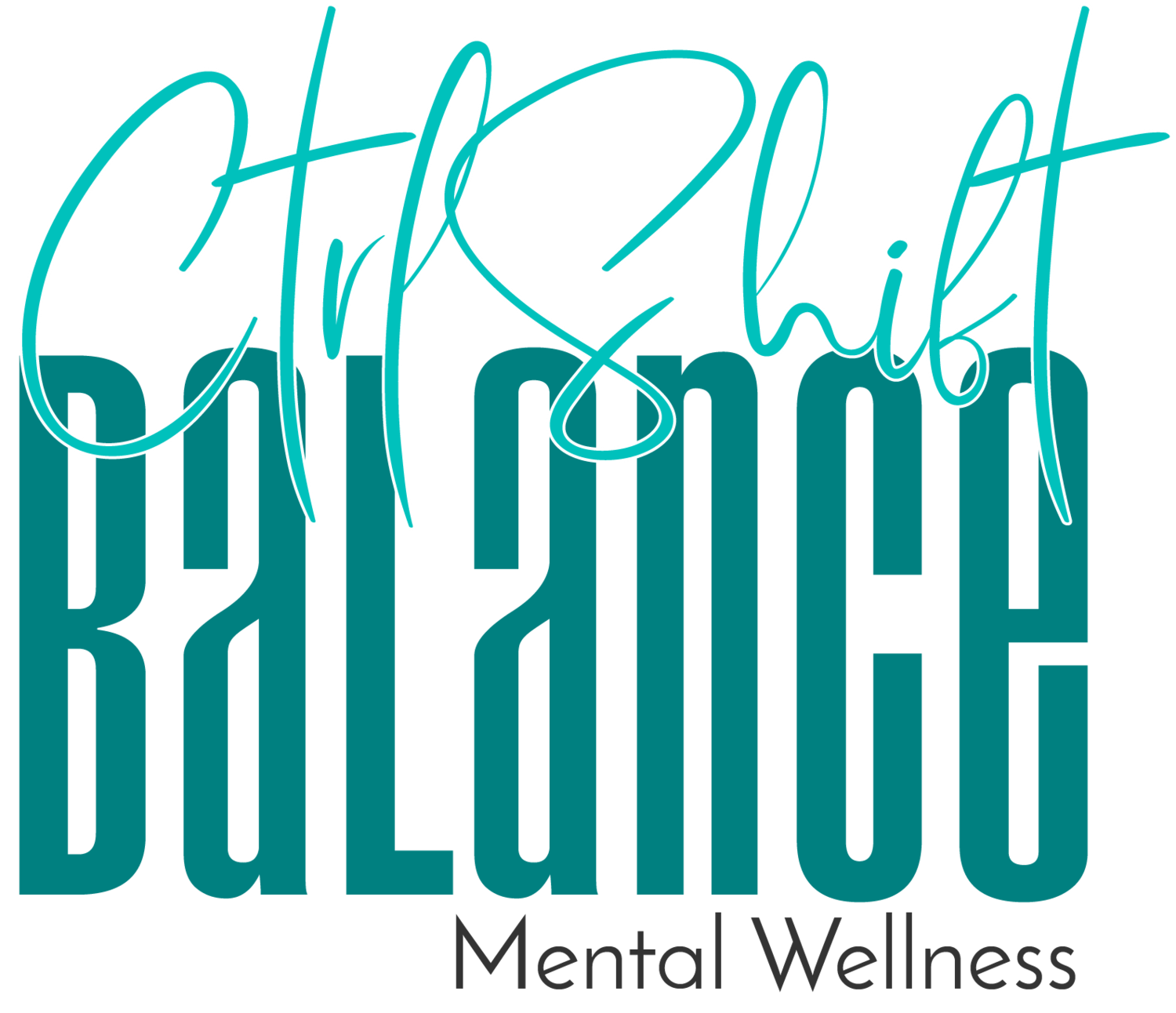
CTRL Shift ChallEnges
You need challenges in your life to develop resilience. You have to get knocked down in order to learn how to pick yourself back up. Over time, being knocked down can even make you stronger. Plus it makes you less afraid to get knocked down again.
Not sure if you approach challenges in the ways that build resilience? Here's how to do it.
1. Use emotional distancing
When experiencing a challenge, the ability to think about your experiences as if you were “a fly on the wall,” or as if you were someone else who is witnessing your experiences from afar, keeps you from getting stuck in your negative emotions. Emotional distancing also makes it less likely that you will replay the unpleasant details of the event, and as a result, you don’t feel quite as bad when bad things happen.
To practice this technique, first recall a recent stressful conflict you had with another person. Be sure to choose something very specific. For example, recall when “You got into a fight with Devin about forgetting your birthday.” Try not to think about fights with Devin in general.
Now re-imagine the stressful event from an outside observer’s point of view — for example, from the point of view of a stranger on the street or a fly on the wall.
Ask yourself these questions to practice being a fly on the wall:
Would the observer be able to understand why you are upset?
Would the observer be able to see the other person’s point of view?
How would the observer evaluate the situation?
Might this observer view the situation differently than you do?
If you prefer, you can also practice this on social media. Next time you are reading about one of your friend's negative experiences on social media, practice switching back and forth from being in their shoes to being in your shoes. Try to notice how being an outside observer helps make the experience seem less intense.
2. Use temporal distancing
Another technique that can help you better handle stress involves thinking about the outcomes of stressful events in the relatively far future. For example, you might tell yourself that “time heals all wounds,” or “this too shall pass.”
The ability to think about a future where you will no longer be feeling so bad about whatever you’re struggling with helps you get through difficult experiences. It can reduce the intensity of negative emotions and the distress caused by the situation. So next time you are in the midst of a stressful situation, try to look back at the situation from sometime in the future.
Start by recalling a recent stressful event. Be sure to choose something very specific. For example, try to recall, “When I failed to get the promotion I was after” instead of failure, in general. Now imagine what your life will be like five years after this event. Ask yourself these questions:
In five years, what will you be doing?
How will you be spending your time?
How will you be feeling?
How will you feel about this particular event?
3. Use reappraisal
The ability to find the silver linings in stressful or difficult situations (also referred to as reappraisal ability) helps us generate positive emotions, even when there is nothing in our situation to generate positive emotions for us. This is why finding silver linings can help counteract negative emotions, decrease stress, and quicken recovery from stressful events.
How do you find silver linings? You might remind yourself that you’re lucky to have what you have. Or, you might see a challenge as an opportunity to learn and grow.
You see how it works? Now it's your turn to try. Recall a work or school project that didn’t work out the way you hoped. Now, try finding the silver linings of this situation. How could the situation be worse? What are opportunities that could result from this situation? What are the positives? Think of as many reappraisals as you can. Try to be creative and think of anything that would make you feel better about this experience.
4. Find the benefits
Benefit finding is similar to reappraisal, but it can be used in negative, neutral, or positive situations. For example, you might say that the benefits of working a really difficult job are that you learn new skills and build character. But you might also say that the benefits of working a really easy job are that you feel relaxed and have more time to devote to other things you enjoy. With some practice, you can find the benefits to just about any situation.
To practice finding the benefits, first think about a slightly negative experience you had recently. Try not to choose an experience that is extremely negative — it’s important to choose an experience that’s not too bad when you are first learning how to use this technique. You can work up to harder experiences as you become more skilled. For example, maybe your car broke down, or you got in a small fight with a friend.
I know that at first it can be hard to find the benefits of these situations. But the more you practice, the easier it will get. Start by spending a few minutes thinking about the benefits of a negative experience. Try to really search for as many benefits as you can think of. Ask yourself these questions to brainstorm.
Were there, or will there be, any positive outcomes that result from this situation?
Are you grateful for any part of this situation?
In what ways are you better off than when you started?
What did you learn?
How did you grow and develop as a result of this situation?
5. Face your fears
In life, a great many things will make you feel uncomfortable. For example, if you’re worried about your finances, you may not want to look at your credit card balance. Or if you had a bad day at work, you may want to drink alcohol to forget about it all. But this kind of experiential avoidance can be dangerous, because the emotions never get resolved. Instead, they fester and build up. If you’re not addressing negative emotions, they never go away, and you carry them with you wherever you go. Now, imagine facing a big challenge when you're already carrying a bunch of negative emotions with you. It's going to be a lot harder to cope, be resilient, and thrive.
So if you are the type to avoid feeling uncomfortable—for example by avoiding doing things that will be hard, having difficult conversations, or being out of your comfort zone—challenge yourself to feel uncomfortable, just in small ways at first.
Think of something small that makes you uncomfortable, something other people might even find silly, and face your fear. Don’t let yourself back down. If you do, your fear will just build, preventing you from moving forward in the ways you desire.
With Balance & Wellness,
Shayla Peterson
Ctrl Shift manage ANXIETY
When it comes to anxiety, many studies show that women are more likely to suffer it than men. The obvious reasons for this are brain chemistry and hormonal fluctuations. Also, men and women deal with anxiety differently.
If we’re being honest, there is no way to “fix” anxiety. It stays with you one way or another and all that you can do about it is learn how to Ctrl Shift & manage it.
Over time, many women have gotten to know anxiety better. They finally figured out what works for them when it comes to overcoming it. Knowing the tools available is a good first step when dealing with anxiety.
So, what should we do? Check out the list below on ways to manage anxiety with self-care.
GET ENOUGH SLEEP
Needless to say, sleep gives your mind and body to heal. Yet, most people don't get enough sleep. They often sacrifice a healthy seven to nine hours of sleep to keep up with the demands of the world. Start working towards getting appropriate sleep regularly. This will help maintain healthy emotional and social functioning.
RUNNING
Don’t you think that there’s something magical about getting up at 5 or 6 in the morning? And getting dressed half-asleep, going out, and having a run around the neighborhood? You get to observe the city and nature waking up, so quiet and so peaceful. You get rid of all tension, negativity, and stress before the day begins. You then become more relaxed, calm, and ready to face the day.
This is why many women found running as their way to cope with anxiety. This is also because research proves that regular exercise reduces the risk of chronic disease. It improves self-esteem and reduces the symptoms of both depression and anxiety.
POSITIVE AFFIRMATIONS
Having positive self-talk with yourself helps in altering your subconscious thoughts. When anxious thoughts begin to set in, affirmations help you adopt a positive mindset. Positive thoughts affect your reality. They can create an energy and perspective that shape your actions.
MEDITATION & BREATHING EXERCISES
Learn to clear your mind through meditation. Start by focusing on your breath and body sensations. Furthermore, evaluate your thoughts as they enter your mind. These techniques are proven to reduce anxiety.
Unfortunately, there is no quick fix to battling anxiety. It’s something that you’ll need to learn how to manage every day. But we can be grateful that there are many solutions to help reduce its presence in our lives.
If you feel like there’s more you want to add or you want to share your story, connect with me and let’s create an emotional wellness plan for you today.
If you would like additional resources to help you manage your Anxiety, check out resource guide or ebooks to kickstart your journey.
Your Partner in Balance & Wellness,
Shayla Peterson, LCSW, LISW-CP
Ctrl Shift AuthentIcity
Being your authentic self can feel risky now in our screen-obsessed world. We’re just trying to fit in, be liked, and be accepted by other human beings. And as a result, the image we present (on our social media profiles and IRL) have become mere presentations of who we think we should be and not reflections of who we really are. So how do we take off the mask we've been wearing and start to live a life of authenticity?
1. Observe yourself objectively
Learn to observe yourself like a fly on the wall. Watch yourself, observing how the version of yourself that you show the world behaves, what it believes, how it reacts under pressure, and how it responds to challenges. Practice noticing which of these responses feel authentic, and which ones feel inauthentic. By identifying which responses are just “for show” vs authentic, you can begin to notice the falseness and begin to better see the truth underneath.
2. Examine family belief systems
Think back to episodes in your childhood, episodes that led you to stop being your authentic self and instead adopt some other way of existing in this world. By examining where our behaviors come from, we can learn a lot about our authentic selves.
3. Identify discrepancies
Try to become aware of discrepancies between your actions and your beliefs. If you catch yourself making a remark that makes you cringe, ask yourself whether you really believe the words you speak. Are you just saying these things because someone else taught you to?
If you acknowledge what is true for you now, then you can better live your life according to the needs of your Authentic Self. But that kind of authenticity requires self-awareness and self-honesty.
4. Examine your doubts
When exploring your Authentic Self, you may feel unsure of how to go about it. You may question whether it's even possible to change what feels so deeply ingrained within you or is invisible to you. So keep an eye out for feelings of doubt.
Doubts can be like breadcrumbs that lead you to your Authentic Self. If you doubt something—a thought, behavior, emotion, experience—reflect for a moment to find whatever is underneath. Is your Authentic Self trying to tell it to "stop it?"
5. Face your fears
Humans tend to be most comfortable with what is familiar. The unfamiliar is often challenging, at least at first. Examining your core beliefs can be like exploring a foreign landscape you are unfamiliar with.
Our Authentic Self often has a lot of fear, sadness, and anger—our true selves were hurt and that's why they hide. However, the difficult secrets we hide from ourselves are what make us who we really are. So as much as possible, and as slowly as you need to, courageously explore the truth of what makes you who you are. Identifying, experiencing, accepting, and letting go of these buried emotions is exactly what fuels your Authentic Self.
6. Explore your values
Integrity, ethics, and living our values is an effective way to live more authentically. The trouble comes when we are so far from our Authentic Selves that we do not even know what our values are. So explore your values and figure out some ways to start living them.
7. Love yourself
Because it takes self-love for our Authentic Selves to emerge, embedding more love and compassion for yourself is helpful. One way to increase your self-love is to set aside some time aside to take numerous deep breaths each day. You can add this into an existing meditation practice if you like.
Slowly deepen your breathe and when you are feeling fully relaxed and receptive, call love to yourself from your environment. Imagine each breath infused with loving energy. Whether as balls of energy, or bursts, or rays of light and love, invite love to enter your body via your breath. Draw love into your lungs and disperse it throughout your body, or send it directly to your Authentic Self. Keep breathing consciously until you feel the lightening and lifting energy of these "love breaths."
Once filled with love, share some of it with friends or loved ones. Sending love to others tends to expand the love within!
With Alignment & Authenticity,
Shayla Peterson, LCSW, LISW-CP
Ctrl Shift overWhelmEd
Ever had days where everything just feels a little bit too much? Days where it all feels so consuming and you feel like you can’t get anything done?
As we get older, we find ourselves buried in a never-ending list of priorities, to-dos, commitments, and responsibilities. And this is where the feeling of overwhelm sets in.
Most of us have been there. And it is in no way because we’re weak. It’s only because overwhelm is something we all feel at some point in our lives and that’s okay.
So what can we do the next time we get caught up with overwhelm?
Pause
This may seem a bit flawed when you have five deadlines to meet by the end of the week, but still. It is so important to create sacred boundaries around your time.
Carve out even just 15 minutes of your time to PAUSE. Take a step back from everything and go have a cup of coffee, take a walk, go for a short drive.
Oftentimes, overwhelm comes from feeling like we have no time. The truth is, we are more in control of our time than we think.
Refocus
A common cause of feeling overwhelmed is because there’s usually a lot going on inside our heads. When overwhelm sets in, it’s easy to lose sight of what’s most important. Instead of trying to do everything at once, take a moment to get clear on what’s most important to you.
There are many reasons why we feel overwhelmed and one of them is the lack of clarity on what we want. Be clear with your priorities and WHY you are doing them. You’ll find yourself focusing on the right things.
Say “no” more
It’s about time you learn to stop putting so many things on your plate. Saying no is one strong foundation of creating healthy boundaries. You can’t be all things at once. Always remember to leave room for yourself.
When asked to take on a project, carefully think about whether you can deliver on that “yes”. Also, be honest — to the person, but mostly to yourself.
Let perfectionism go
One of the most persistent types of overwhelm is feeling like we can never get anything done. But in reality, it’s all because we expect so much of ourselves. We set standards so high that nothing we do feels enough.
More often than not, we find ourselves constantly trying to do more in the chase of perfection. But all that does is lead us to extreme overwhelm and exhaustion. Let perfectionism go and start working smartly instead.
Create systems for your work, try new technologies, leverage your time by organizing and delegating tasks. Anything that can help you sort through whatever it is you have on your plate, do it.
Overwhelm is… something we can never avoid. But it is something we can have control over. Learn to figure out what’s driving you to overwhelm in the first place so you can get around it and understand better how to work on it.
If you want to share your story and talk about more ways you can overcome overwhelm, schedule a consultation with me.
With Balance & Wellness,
Shayla Peterson, LCSW, LISW-CP








